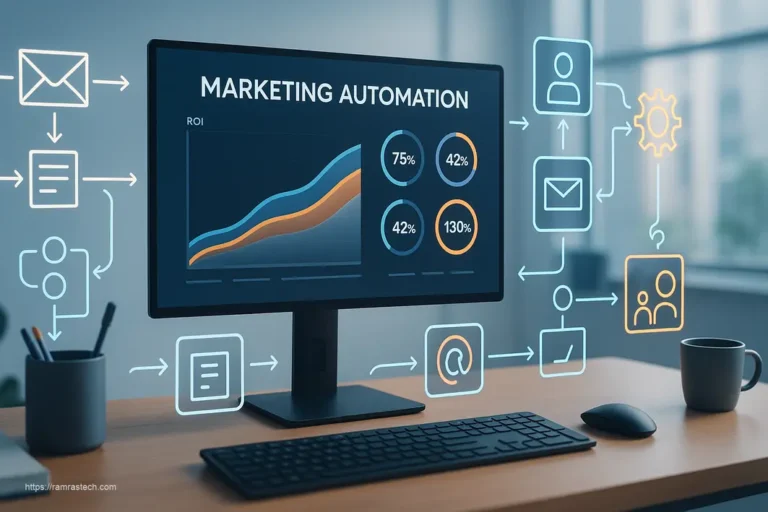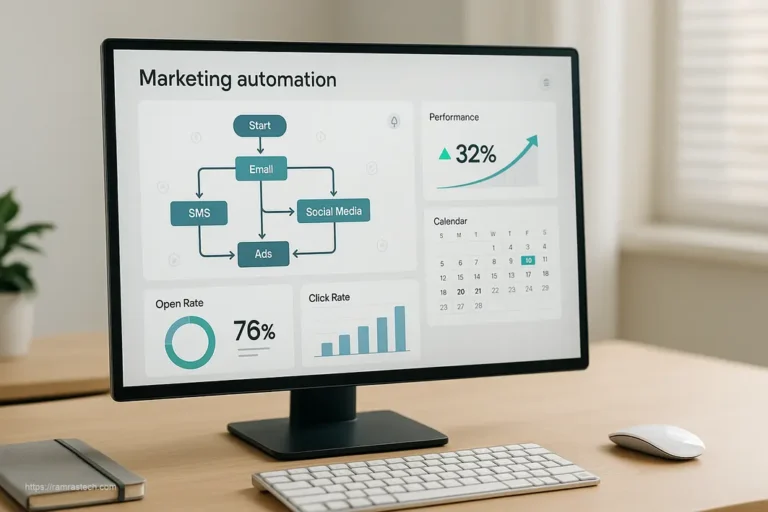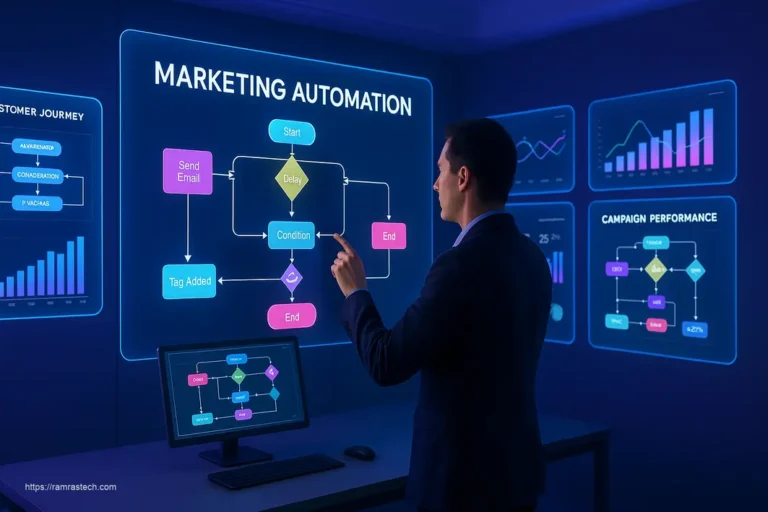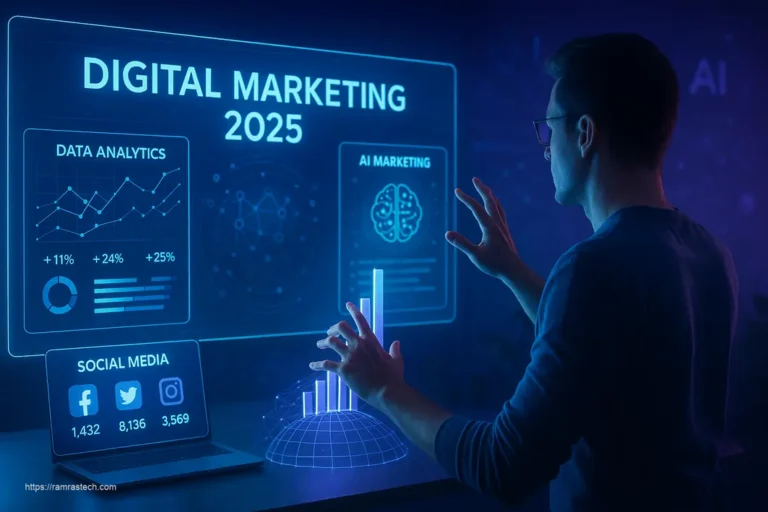10 Game-Changing Marketing Automation Strategies for 2025!
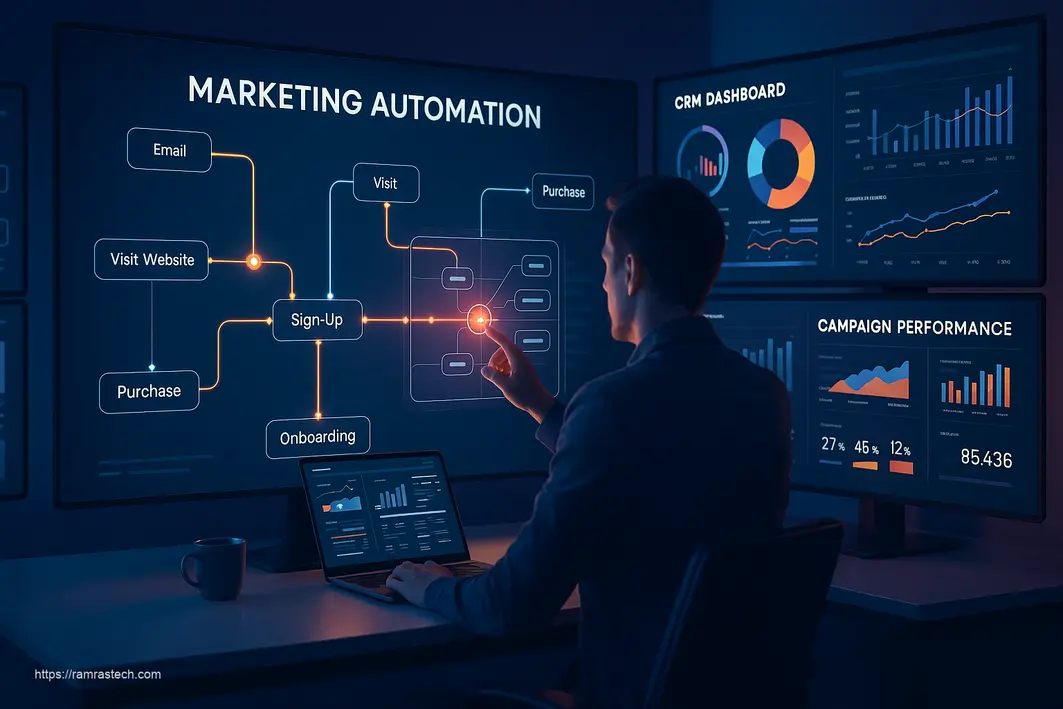
As we dive deeper into the digital era, marketing automation strategies have become non-negotiable for businesses determined to stay competitive. Gone are the days when marketing was merely about creating attractive ads and hoping for the best. Today, it’s about leveraging technology to deliver the right message to the right person at precisely the right moment—all while maximizing efficiency and minimizing manual effort.
The global marketing automation market is projected to reach $25.1 billion by 2023, growing at an impressive CAGR of 14.1%. This explosive growth isn’t surprising when you consider how these strategies have revolutionized the way businesses connect with their audiences, nurture leads, and drive conversions.
Why Marketing Automation Strategies Matter Now More Than Ever
In a world where consumers are bombarded with thousands of marketing messages daily, standing out requires more than just creativity—it demands precision, personalization, and perfect timing. Marketing automation strategies enable businesses to cut through the noise by delivering hyper-relevant content that resonates with individual needs and preferences.
But what exactly makes these strategies so powerful? For starters, they eliminate the need for repetitive manual tasks, freeing up your team to focus on strategic initiatives that drive growth. They also provide valuable insights into customer behavior, allowing you to refine your approach continuously and maximize ROI.
Let’s explore the most effective marketing automation strategies that will help your business thrive in 2025 and beyond.
Building a Solid Foundation: Essential Marketing Automation Strategies
Customer Journey Mapping Automation
Before implementing any automation, you need to understand your customer’s journey. Modern automation platforms now offer sophisticated journey mapping tools that not only visualize but actively track and optimize each touchpoint.
For example, a B2B software company might map out a journey that includes:
- Initial awareness through a LinkedIn post
- Email signup for a white paper
- Webinar registration
- Product demo request
- Sales call
- Purchase decision
- Onboarding
- Retention communications
By automating the tracking of this journey, you can identify bottlenecks where prospects drop off and opportunities to accelerate the path to purchase. The most advanced platforms use AI to recommend optimizations based on successful journeys of similar customers.
“Journey mapping automation doesn’t just visualize the path—it actively optimizes it through real-time data analysis and predictive modeling,” notes the Deloitte Digital 2025 Marketing Trends report.
Intelligent Lead Scoring and Prioritization
Not all leads are created equal—some are ready to buy, while others need nurturing. Automated lead scoring assigns values to prospects based on their behavior, demographics, and engagement pattern.
In 2025, lead scoring systems have evolved beyond basic point assignments to incorporate:
- Predictive lead scoring using machine learning algorithms
- Behavioral pattern recognition
- Engagement velocity tracking
- Intent signal monitoring across platforms
- Buying stage identification
These sophisticated scoring models automatically route high-priority leads to sales while placing others into appropriate nurture streams. This ensures your sales team focuses on prospects most likely to convert while marketing continues building relationships with those who need more time.
According to WebFX, “Companies that excel at lead nurturing generate 50% more sales-ready leads at 33% lower cost.”
Omnichannel Campaign Orchestration
Today’s consumers interact with brands across multiple channels—email, social media, websites, mobile apps, and more. Effective marketing automation strategies synchronize messaging across all these touchpoints to create a cohesive experience.
Modern omnichannel orchestration platforms enable you to:
- Create unified campaigns spanning multiple channels
- Maintain consistent messaging while adapting to channel-specific formats
- Track cross-channel engagement
- Automatically adjust channel mix based on individual preferences
- Deploy triggered responses across channels based on specific actions
For instance, if a customer abandons their cart on your website, your automation might trigger an email reminder, followed by a retargeting ad on Instagram, and perhaps even a personalized push notification if they have your app installed.
“The average consumer uses ten channels to communicate with businesses,” highlights Digital Marketing Institute. “Brands that create seamless experiences across these channels see 91% higher customer retention rates.”
Advanced Marketing Automation Strategies for 2025
AI-Powered Personalization at Scale
Personalization has evolved far beyond “Hi [First Name]” in emails. Today’s marketing automation platforms leverage artificial intelligence to create truly individualized experiences at scale.
AI-driven personalization can:
- Analyze thousands of data points to predict customer preferences
- Dynamically adjust content, offers, and creative elements
- Generate personalized product recommendations
- Create individualized subject lines and email copy
- Optimize send times for maximum engagement
One remarkable example comes from a leading e-commerce brand that implemented AI personalization across their customer communications. Their system analyzes past purchase history, browsing behavior, and even weather conditions in the customer’s location to customize product recommendations, resulting in a 34% increase in average order value.
“Generative AI has transformed personalization from a nice-to-have feature to an essential strategy,” notes Salesmate. “Consumers now expect brands to understand their needs and anticipate their wants.”
Conversational Marketing Automation
The rise of chatbots and conversational interfaces has created new opportunities for automated engagement. Advanced chatbots powered by natural language processing can now handle complex interactions, qualifying leads and providing personalized assistance 24/7.
Modern conversational marketing automation includes:
- AI chatbots that improve with each interaction
- Voice-activated assistants for hands-free engagement
- Automated WhatsApp business messaging
- Conversation-triggered workflow activation
- Seamless handoff between bot and human representatives
A financial services company implemented conversational marketing automation on their website and saw a 67% increase in qualified leads. Their system guides visitors through an assessment of their needs, provides relevant resources, and books appointments with advisors—all without human intervention until the prospect is ready for a personalized consultation.
Interested in implementing chatbots for your business? Check out our guide on how to build chatbots for lead generation to get started.
Predictive Analytics and Next-Best-Action Recommendations
Predictive analytics takes marketing automation to another level by forecasting future customer behaviors and recommending optimal next steps.
These systems can:
- Predict which customers are at risk of churning
- Identify cross-sell and upsell opportunities
- Recommend the most effective content for each stage of the journey
- Forecast campaign performance before launch
- Suggest optimal budget allocation across channels
For example, a B2B technology company uses predictive analytics to identify when existing customers might be ready to upgrade their subscription. The system analyzes usage patterns, growth metrics, and engagement signals to trigger personalized upgrade recommendations precisely when customers are most likely to see value in expanding their service.
Integration: The Key to Marketing Automation Success
CRM and Marketing Automation Synergy
The most powerful marketing automation strategies rely on tight integration between your marketing automation platform and CRM system. This connection creates a closed loop where marketing efforts directly inform sales activities and vice versa.
Benefits of this integration include:
- Complete visibility of the customer journey from first touch to closed deal
- Automatic lead routing based on qualification criteria
- Sales insights that inform marketing campaigns
- Closed-loop reporting on campaign ROI
- Alignment between marketing and sales teams
“When CRM and marketing automation work in harmony, companies see a 38% higher sales win rate and 36% higher customer retention,” according to research cited by Encharge.
Looking to maximize your budget while implementing these integrations? Don’t miss our ultimate guide to affordable marketing automation for SMEs.
Data Unification and Customer 360 Views
Effective automation relies on comprehensive customer data. Modern marketing automation strategies prioritize creating unified customer profiles that aggregate information from multiple sources.
A robust data unification strategy includes:
- Customer Data Platforms (CDPs) that consolidate information
- Identity resolution across devices and platforms
- Progressive profiling to build comprehensive understanding over time
- Real-time data synchronization
- Privacy compliance and consent management
One retail brand created a unified customer data platform that pulls information from point-of-sale systems, website interactions, mobile app usage, loyalty program participation, and customer service records. This 360-degree view enables them to deliver hyper-relevant communications that acknowledge all past interactions, regardless of channel.
Measuring Success: Analytics and Optimization
Attribution Modeling and ROI Tracking
Understanding which marketing efforts drive results is crucial for optimizing your automation strategies. Advanced attribution modeling has evolved to provide more accurate insights into the customer journey.
Modern attribution approaches include:
- Multi-touch attribution models that consider all touchpoints
- Algorithmic attribution using machine learning
- Cross-device and cross-channel tracking
- Offline conversion tracking
- Lift analysis and incrementality testing
“The brands seeing the greatest success with marketing automation are those that continuously refine their understanding of what works,” notes WebFX. “Attribution modeling has evolved from simple last-click models to sophisticated algorithms that accurately weight each interaction.”
Want to better understand your marketing performance? Learn the basics with our introduction to Google Analytics.
A/B Testing and Experimentation at Scale
Continuous improvement is built into the DNA of effective marketing automation strategies. Modern platforms enable sophisticated testing that goes beyond simple A/B comparisons.
Advanced testing capabilities include:
- Multivariate testing across multiple variables
- Automated test design and sample size calculation
- Segment-specific testing groups
- AI-powered test result analysis
- Automatic implementation of winning variations
For example, a SaaS company runs continuous tests on their onboarding email sequence, automatically testing different subject lines, content formats, send times, and call-to-action styles. Their system identifies the best-performing combinations for different user segments and automatically implements these optimizations, resulting in a 23% increase in activation rates.
Overcoming Common Marketing Automation Challenges
Data Quality and Management
Even the most sophisticated automation strategies fall flat without clean, accurate data. Common data challenges include:
- Duplicate records and inconsistent information
- Incomplete customer profiles
- Data decay as information becomes outdated
- Siloed data across different systems
- Compliance with data privacy regulations
Successful companies address these challenges by:
- Implementing regular data cleaning and enrichment processes
- Creating clear data governance policies
- Using validation rules to ensure quality inputs
- Conducting periodic data audits
- Training teams on proper data management
“Data quality is the foundation of effective automation,” emphasizes Encharge. “Without it, you’re essentially building a high-performance engine and filling it with contaminated fuel.”
Balancing Automation and Human Touch
While automation dramatically improves efficiency, maintaining authenticity remains crucial. The most effective strategies find the right balance between automation and human connection.
Approaches to this balance include:
- Identifying high-value touchpoints that benefit from personal attention
- Creating automation that feels conversational and authentic
- Using automation to highlight opportunities for meaningful human interaction
- Empowering team members with automation-generated insights
- Regularly reviewing automated communications for tone and relevance
A B2B consulting firm automates their nurture sequences but has their account executives record personalized video messages at key decision points. This approach combines the efficiency of automation with the persuasiveness of personal connection.
Looking to enhance your digital marketing strategy beyond automation? Check out our article on how to achieve maximum ROI with PPC advertising.
The Future of Marketing Automation Strategies
Voice-Activated Marketing Automation
As voice assistants become increasingly prevalent in homes and businesses, marketing automation strategies are evolving to incorporate voice interactions.
Emerging voice automation opportunities include:
- Voice-optimized content delivery
- Voice-initiated purchase paths
- Conversational search optimization
- Voice-based customer service automation
- Voice user interface design for marketing applications
“By 2025, voice commerce is projected to reach $80 billion annually,” according to Digital Marketing Institute. “Brands that optimize their automation for voice interfaces will have a significant advantage.”
Ethical AI and Responsible Automation
As marketing automation becomes more powerful, ethical considerations and responsible implementation become increasingly important.
Key aspects of ethical marketing automation include:
- Transparency about automated interactions
- Clear opt-in and preference management
- Bias detection and mitigation in AI algorithms
- Responsible use of predictive capabilities
- Privacy-first design principles
Consumers increasingly favor brands that use technology responsibly. A recent study found that 86% of customers are more likely to trust companies that are transparent about how their data is used in automated systems.
Implementing Your Marketing Automation Strategy
Building Your Marketing Automation Tech Stack
Selecting the right tools is crucial for successful automation implementation. A comprehensive marketing automation tech stack typically includes:
- Core marketing automation platform
- Customer data platform
- Content management system
- Analytics and reporting tools
- Integration middleware
- Customer relationship management system
When evaluating options, consider factors like:
- Scalability as your business grows
- Integration capabilities with your existing systems
- User-friendliness for your team
- Cost relative to expected ROI
- Available support and resources
“The most successful companies don’t necessarily use the most expensive tools,” notes Salesmate. “They choose platforms that align with their specific needs and integrate well with their existing ecosystem.”
For small businesses with limited budgets, check out our guide to affordable digital marketing: maximizing your budget.
Change Management and Team Enablement
Implementing new marketing automation strategies often requires significant changes to workflows and processes. Successful implementation depends on:
- Clear communication about the benefits of automation
- Comprehensive training programs
- Phased implementation to avoid overwhelming teams
- Celebrating early wins to build momentum
- Ongoing support and resources
A healthcare marketing team successfully implemented a new automation platform by starting with a single campaign type, demonstrating the time savings and improved results, then gradually expanding to additional use cases as team confidence grew.
Conclusion: Taking Action on Marketing Automation Strategies
As we’ve explored, marketing automation strategies have evolved from simple time-saving tools to sophisticated systems that can transform your entire marketing approach. The most successful businesses in 2025 will be those that embrace these capabilities while maintaining the human creativity and strategic thinking that automation can’t replace.
To get started or improve your current automation efforts:
- Assess your current capabilities and identify gaps
- Prioritize automation opportunities based on potential impact
- Invest in building a solid data foundation
- Select tools that align with your specific needs
- Implement in phases, focusing on quick wins first
- Continuously measure results and optimize
Remember that marketing automation is not a set-it-and-forget-it solution but rather a continuously evolving set of strategies that require ongoing attention and refinement.
By implementing these cutting-edge marketing automation strategies, you’ll be well-positioned to deliver more personalized, effective, and efficient marketing that drives business results in 2025 and beyond.
Frequently Asked Questions
What is the difference between marketing automation and email marketing?
While email marketing focuses specifically on sending emails to prospects and customers, marketing automation encompasses a much broader set of capabilities. Marketing automation includes email but also extends to social media management, lead scoring, website personalization, SMS messaging, ad targeting, and comprehensive analytics across all channels. Think of email marketing as a single instrument, while marketing automation is the entire orchestra playing in harmony.
How much does marketing automation cost?
Marketing automation costs vary widely based on your needs, company size, and selected platform. Entry-level solutions start around $200-$500 monthly for small businesses with basic needs. Mid-market solutions typically range from $1,000-$2,500 monthly. Enterprise-level platforms with advanced capabilities can cost $4,000+ monthly. Beyond software costs, consider implementation, integration, and potential consulting fees. Many platforms offer tiered pricing based on contact database size or features needed.
How long does it take to implement marketing automation?
Implementation timelines vary significantly based on your organization’s size, complexity, and existing systems. A basic implementation for a small business with straightforward needs might take 1-2 months. Mid-sized companies typically require 3-6 months for full implementation and optimization. Enterprise organizations with complex integrations and custom requirements often need 6-12 months for complete rollout. The key is to implement in phases, starting with high-impact, low-complexity use cases to demonstrate value quickly.
Can small businesses benefit from marketing automation strategies?
Absolutely! Small businesses often see the most dramatic benefits from marketing automation because they face the greatest resource constraints. Automation allows small teams to execute sophisticated marketing programs that would otherwise require much larger staffs. For small businesses, marketing automation can level the playing field against larger competitors by creating consistent customer experiences, nurturing leads effectively, and providing data-driven insights. The key is selecting right-sized solutions that offer the necessary functionality without unnecessary complexity or cost.
